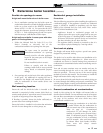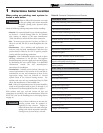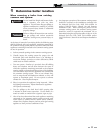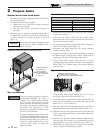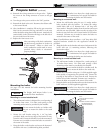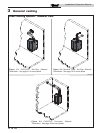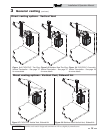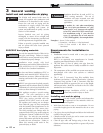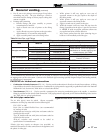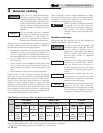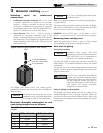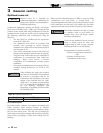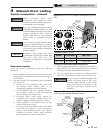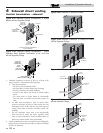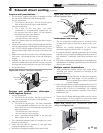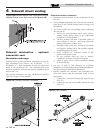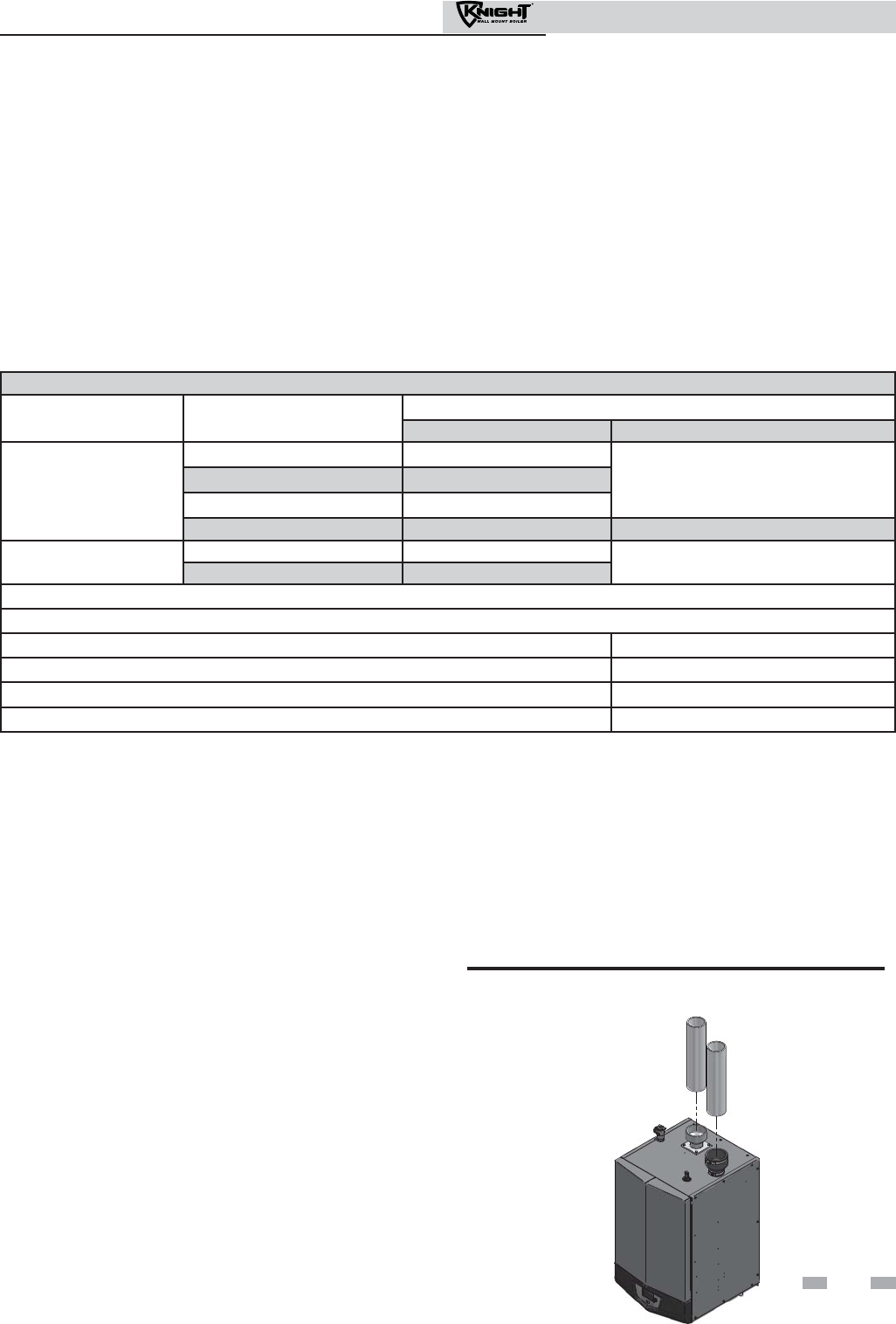
3 General venting (continued)
Table 3A Vent Pipe, and Fittings
5. Dry fit vent or air piping to ensure proper fit up before
assembling any joint. The pipe should go a third to
two-thirds into the fitting to ensure proper sealing after
cement is applied.
6. Priming and Cementing:
a. Handle fittings and pipes carefully to prevent
contamination of surfaces.
b. Apply a liberal even coat of primer to the fitting
socket.
c. Apply a liberal even coat of primer to the pipe end to
approximately 1/2" beyond the socket depth.
d. Apply a second primer coat to the fitting socket.
e. While primer is still wet, apply an even coat of
approved cement to the pipe equal to the depth of
the fitting socket.
f. While primer is still wet, apply an even coat of
approved cement to the fitting socket.
g. Apply a second coat of cement to the pipe.
h. While the cement is still wet, insert the pipe into the
fitting, if possible twist the pipe a 1/4 turn as you insert
it. NOTE: If voids are present, sufficient cement was
not applied and joint could be defective.
i. Wipe excess cement from the joint removing ring or
beads as it will needlessly soften the pipe.
PVC/CPVC air intake/vent connections
1. Combustion Air Intake Connector (FIG. 3-9) - Used to provide combustion air directly to the unit from outdoors. A fitting
is provided on the unit for final connection. Combustion air piping must be supported per guidelines listed in the National
Mechanical Code, Section 305, Table 305.4 or as local codes dictate.
2. Vent Connector (FIG. 3-9) - Used to provide a passageway for conveying combustion gases to the outside. A transition
fitting is provided on the unit for final connection. Vent piping must be supported per the National Building Code, Section
305, Table 305.4 or as local codes dictate.
VENT
AIR
Figure 3-9 Near Boiler PVC/CPVC Venting
Air inlet pipe materials:
The air inlet pipe(s) must be sealed. Choose acceptable
combustion air inlet pipe materials from the following list:
PVC, CPVC or ABS
Dryer Vent or Sealed Flexible Duct (not recommended
for rooftop air inlet)
Galvanized steel vent pipe with joints and seams sealed as
specified in this section.
Type “B” double-wall vent with joints and seams sealed as
specified in this section.
AL29-4C, stainless steel material to be sealed to
specification of its manufacturer.
*Plastic pipe may require an adapter (not provided) to
transition between the air inlet connection on the appliance and
the plastic air inlet pipe.
All vent pipe materials and fittings must comply with the following:
Item Material
Standards for installation in:
United States Canada
Vent pipe and fittings
PVC schedule 40 ANSI/ASTM D1785
CPVC and PVC venting must be ULC-
S636 Certified. IPEX is an approved
manufacturer in Canada supplying vent
material listed to ULC-S636.
PVC-DWV ANSI/ASTM D2665
CPVC schedule 40/80 ANSI/ASTM F441
AL29-4C UL1738 ULC-S636
Pipe cement/primer
PVC ANSI/ASTM D2564
IPEX System 636
Cements & Primers
CPVC ANSI/ASTM F493
NOTICE: DO NOT USE CELLULAR (FOAM) CORE PIPE
Approved Stainless Steel Vent Manufacturers
Make Model
ProTech Systems (Simpson Dura-Vent Co.) FasNSeal Vent / FasNSeal Flex* Vent
Z-Flex (Nova Flex Group) Z-Vent
Heat Fab (Selkirk Corporation) Saf-T Vent
17
*Use of FasNSeal Flex smooth inner wall vent is to be used in vertical or near vertical sections only, taking precaution to ensure
no sagging occurs of the vent system. Connect to the FasNSeal rigid vent using specially designed adapters and sealing method,
see manufacturer’s instructions.
Installation & Operation Manual



